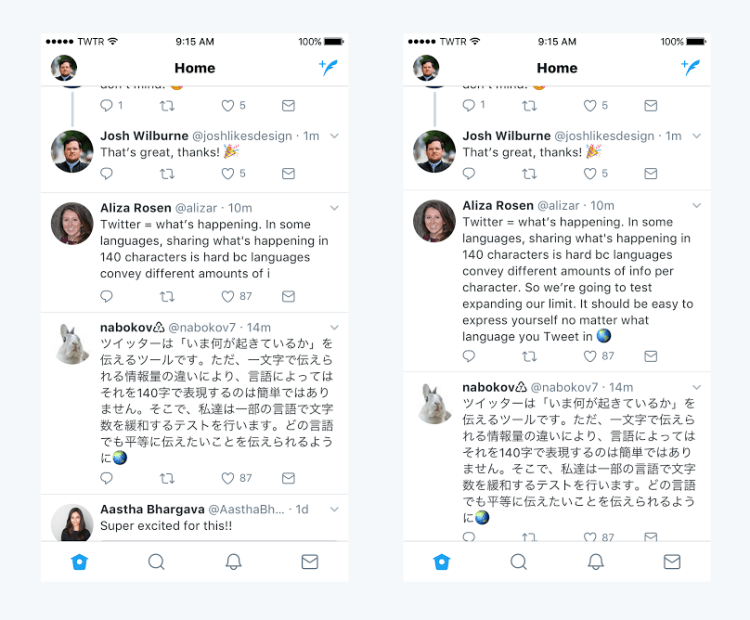One day — maybe soon or maybe much, much later — you just might, possibly, be able to tweet 280 characters. Or not. We’ll see how things go. Eventually.
That is what we know about Twitter’s surprise decision to raise the character limit from its traditional 140 characters. The decision came as a real surprise. But by the same measure, it was classic Twitter: a timid dipping of its toe into the waters of change that may lead to some change at some distant point over the horizon. Maybe.
For me, this pretty well sums up Twitter’s dilemma when it comes to product development. More than 10 years after its creation, Twitter remains trapped within a fairly narrow view of what it is and what it should be. It is held hostage by a fear of alienating long-time, hardcore users, who seem surprisingly resistant to change, with the result that it must take a fairly conservative approach to any new features.
In a tweet after the entirely predictable backlash on (where else?) Twitter, CEO redux Jack Dorsey attempted to address the wailing and gnashing of teeth with a bit of humor:
June 5th: The AI Audit in NYC
Join us next week in NYC to engage with top executive leaders, delving into strategies for auditing AI models to ensure fairness, optimal performance, and ethical compliance across diverse organizations. Secure your attendance for this exclusive invite-only event.
We expected (and ❤️!) all the snark & critique for #280characters. Comes with the job. What matters now is we clearly show why this change is important, and prove to you all it’s better. Give us some time to learn and confirm (or challenge!) our ideas. https://t.co/qJrzzIluMw
— jack (@jack) September 27, 2017
So Twitter will take a careful, measured approach to rolling this one out. Which means that for a long time to come, it will be a platform of 280-character haves and have-nots.
As an example of what that could look like, consider the Moments product Twitter launched two years ago. I live in France, and Moments is not available when I use Twitter in my web browser. For the life of me, I can’t imagine why. Has it really taken two years to roll out completely?
In reality, most long-time users figured out a workaround to the 140-character limit long ago. Some started including photos and screenshots of longer texts. Others started doing tweetstorms to express longer thoughts. As with the hashtag, it was Twitter’s users who dragged the company into evolving.
Being hamstrung by its history is one of the major reasons that Twitter was lapped several times over by Facebook. Yes, Facebook has certainly launched an insane number of new products, most of which were duds. But the ones that stuck, like the newsfeed and a standalone Messenger app and now video, have driven the company to extraordinary growth and impact. Years later, I’m still wondering how Twitter never adapted its direct messaging app to ride the wave of such products. How is it we still can’t edit our Tweets?
As much chatter as the 280-character announcement stirred, it will be a long time before it has a real impact. If it ever does. In addition to watching how it affects users, Twitter will now need to cautiously see how it is received by advertisers. That’s a lot of watching and talking and studying to be done.
In the meantime, users will likely continue to find new ways to use Twitter. And the company will continue to fall further behind as it struggles to take even the tiniest baby step into its uncertain future.
Facebook had to temper its “move fast and break things” mentality a couple of years ago. But I wouldn’t mind if Twitter could find a way to be a bit less precious about itself and maybe be okay with at least making a few cracks from time to time.

